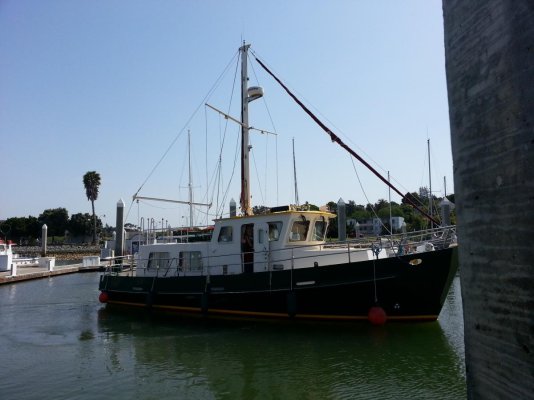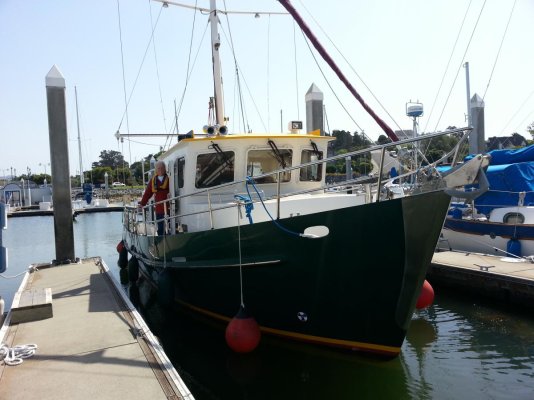Guilhem
Veteran Member
- Joined
- Apr 15, 2021
- Messages
- 58
- Vessel Name
- Octant
- Vessel Make
- Grand Banks 42 MY
The captain of the other boat called me today, regarding insurance and such, we had a pleasant conversation about Grand Banks, and we also spent some time going over the mishap again and what we could have done better.
I clarified why he went back and forth to the flybridge: he had no control of the windlass from the lower helm. He decided to get one installed. I think it makes sense to be able to operate the windlass from the bow, but also from both lower helm and flybridge..
From our conversation and debriefing, I believe the best course of action would have been for me to dump the rode, cutting it off if need be, and motor away. This would require caution since I had another boat behind me, and the dumping of the rode would get me closer. Maybe I should have kept the snubber on, dumped the rode, and only once it was clear, removed the snubber and quickly engage gear, so that I wouldn't drift back.
I take the point from ghost in post #24 above of having a shackle between chain and line, with enough length of line so that when unrolling the whole rode, the shackle ends up on deck, so that it can be undone without having to to back down to the V-berth cabin and fumble with a knife without seeing outside what is going on.
And, I will get another fender ready to be deployed. One at the bow, one aft, I think this is cheap insurance...
Thanks all for the comments.
I clarified why he went back and forth to the flybridge: he had no control of the windlass from the lower helm. He decided to get one installed. I think it makes sense to be able to operate the windlass from the bow, but also from both lower helm and flybridge..
From our conversation and debriefing, I believe the best course of action would have been for me to dump the rode, cutting it off if need be, and motor away. This would require caution since I had another boat behind me, and the dumping of the rode would get me closer. Maybe I should have kept the snubber on, dumped the rode, and only once it was clear, removed the snubber and quickly engage gear, so that I wouldn't drift back.
I take the point from ghost in post #24 above of having a shackle between chain and line, with enough length of line so that when unrolling the whole rode, the shackle ends up on deck, so that it can be undone without having to to back down to the V-berth cabin and fumble with a knife without seeing outside what is going on.
And, I will get another fender ready to be deployed. One at the bow, one aft, I think this is cheap insurance...
Thanks all for the comments.


 . What happened speaks for itself, ie he dragged soon after dropping,fouling the affected boat`s rode. On balance it`s a defective anchoring.
. What happened speaks for itself, ie he dragged soon after dropping,fouling the affected boat`s rode. On balance it`s a defective anchoring.
